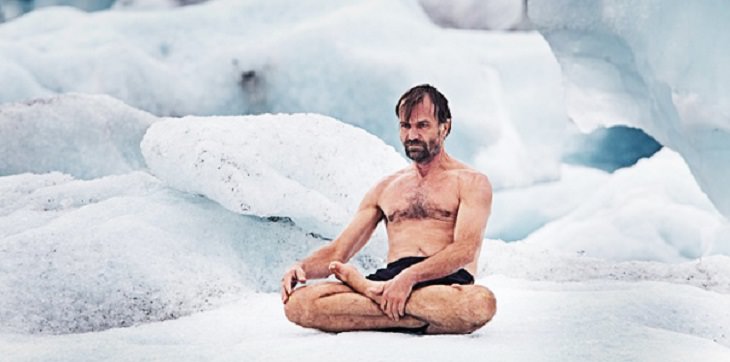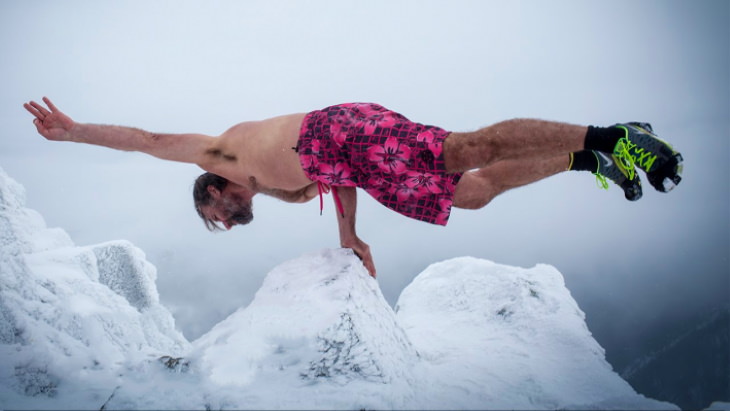

How Is Wim Hof Capable of Controlling His Immune System?
The unique athlete claims that he is capable of consciously fighting any disease in his body, and in one medical study, Wim Hof was even injected with endotoxin that typically causes fever, headaches, and shivering, but didn’t exhibit any symptoms of the disease. A blood test further confirmed that Hof’s immune system didn’t respond to the disease and the extreme athlete’s test results matched up to those of control subjects.
Moreover, Hof claimed that he is capable of teaching his method to anyone, and he confirmed this claim when he had trained 12 volunteers for a week who were then also injected with endotoxin. The volunteers, too, exhibited reduced symptoms.



Step 1. Relax
In the morning, when your stomach is empty, sit down in a comfortable seated position suitable for meditation. You should be able to expand your lungs freely in this position.
Step 2. Activate
Breathe in as deeply as you can. You should feel some pressure in the middle of your belly (the solar plexus) as you reach the peak of the inhale. Hold your breath for a moment, and then exhale vigorously, letting as much air out of your lungs as you can. Again, hold your breath for another moment, and then repeat the cycle. Do this 15 times.
Step 3. Do 30 Power Breaths
To complete this exercise correctly, imagine you’re blowing into a balloon. On an inhale, use your nose to suck in as much breath as you can very quickly, and exhale through the mouth in strong and rapid bursts. Engage your belly muscles and repeat these breaths in a steady and active pace about 30 times, or when you start feeling that your blood is becoming saturated in oxygen. You might feel light-headed, experience tingling sensations or electrical surges in the body at this point.

Step 4. Explore your body
As you breathe during step 3, become ever so mindful of your body. Explore what each body part is doing as you complete the breaths and how it reacts to the surge of energy and oxygen in the body. Can you feel any blockage, pain, or stiffness in any of your body parts? If so, try to expand the energy you feel in your body to those body parts. You may feel a bit overwhelmed emotionally, start feeling past physical injuries, or experience visual imagery at this stage. All of these 'symptoms' are common, and they will bring you closer to expanding the energy throughout your entire body.
Step 5. Pause
Once you complete the rapid breaths, slowly make a deep inhale, fill all of your lungs with air, and then follow with a deep exhale. Draw your chin to the neck to prevent an accidental inhale, and then pause, holding your breath until you feel a gasp reflex.
Step 6. Recover
For this last step, inhale as deeply as you can and relax your belly, releasing the solar plexus. Hold the inhaled air for about 15 seconds and try to relax the body, expanding the energy to every part of the body once more. This is a complete round.
Most people start with 1 or 2 rounds of breathing for the first few days, and should then be able to increase the number of rounds to a minimum of 6 (around 15 minutes). If you feel dizzy, anxious, or otherwise uncomfortable, you can come out of the sitting posture and lie down and rest. It is also recommended to rest for at least 5-10 minutes and scan your body after completing the exercises to feel the changes you encountered through the practice.